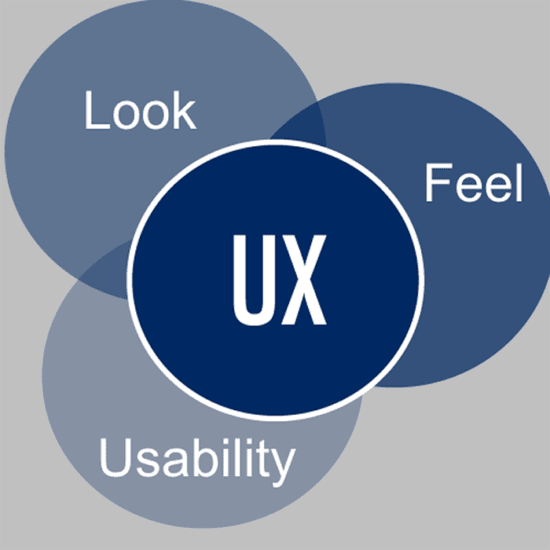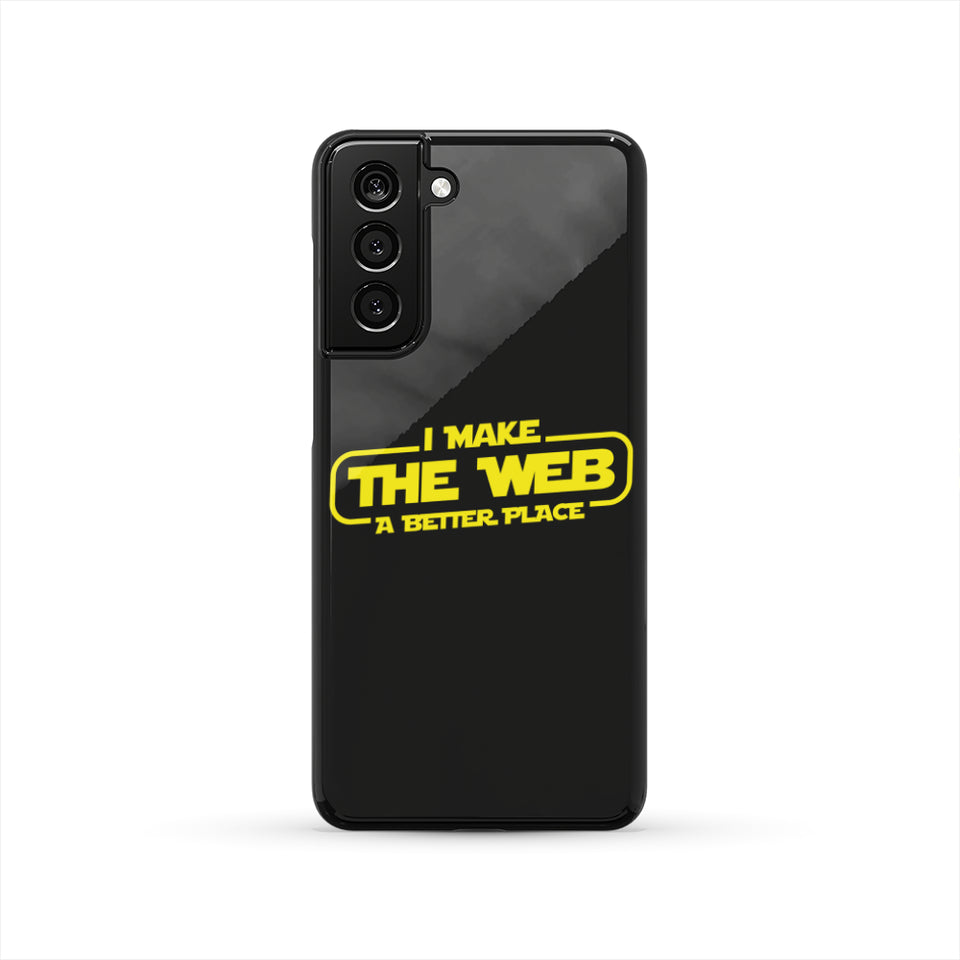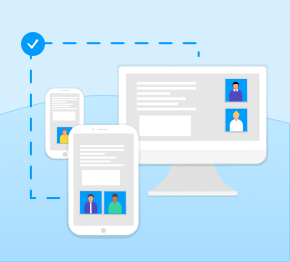
A number of terms are essential to understand during web design. These terms include visual hierarchy and identity as well as user experience. These concepts will guide you in the design of your website's look and feel.
Visual hierarchy is the way that you organize information in your website. This is usually a combination or color, balance and typography. This helps ensure that your website's information is easily readable. It directs your visitors to the most crucial information on your site. It can help you create a feeling that your visitors are nearby.
The way an organization communicates its values and personality is called identity. It also includes color, typography and imagery. Imagery is important as it connects you with your audience. It also helps to reinforce the brand's voice. Your website's color scheme should be consistent with the company's overall branding. It should also include a focal point, which is the most important part of the site.

User experience describes how visitors interact and use your website. It covers how your website looks, and how it works. It also includes the reputation of the site owner. Accessibility can also be included, which is especially important for websites that offer information to persons with disabilities. This includes people who are color blind, hearing impaired, or who use assistive technologies.
A mood board is a collection visual objects and text that you might use during the initial stages of web design. It may include logos, photos, or quotes. This helps you make design decisions before you begin coding. It makes it easy to make design modifications. It can save you time while web development is underway.
Creating a cohesive design can be difficult. Repeating patterns can be helpful to reinforce the design and to ensure that visitors recognize visual cues. High resolution images are important because the greater the resolution, the bigger the image. A format is another important thing to consider when choosing a format. JPG and PNG are the best formats for photos. SVG or GIF are better options for detailed images.
Mood board is also an important tool for making design decisions. It can be used in order to visualize how a font looks and what it should look. It can also be used to illustrate how a page should appear on a specific device. You can also use it to show how the page will look if you move it around.

Wireframes are low-fidelity representations of websites. These drawings usually include place holders for logos, navigation, and other interactive elements. These drawings often include site maps, workflows and site maps.
It is used to ensure consistency in the design of your website's master page. It serves as a repository to store digital components. This could include images, videos and music. Cascading Style Sheets, or CSS, is also included. This style language consists of a small text file containing anonymous information about your website. It allows developers the ability to transform your web page.
FAQ
How to design your website?
Your customers will first need to understand the purpose of your website. What do your customers want from you when they visit your website?
What problem might they face if your site doesn't have what they are looking for?
This knowledge will help you to identify the problems and then solve them. You also need to make sure that everything on your site looks right. It should be easy for users to navigate.
You should have a well-designed website. Make sure that it doesn't take too long to load. If it does take too long, people won't stay as long as they would like to. They will move on to something else.
When you are building an eCommerce site, it is important to consider where all your products are located. Are they in one place? Or are they scattered around your site?
You must decide whether to sell one product only or many products simultaneously. Do you prefer to sell one type of product, or several types?
When you answer these questions, your site can be built.
Now, you have to think about the technical aspects of your site. What will it take to make your site work? Will it run fast enough? Is it possible to access the information quickly using a computer?
Will it be possible to buy something online without paying any extra? Do they need to register with you before they can purchase anything?
These are vital questions you need to ask. These are the questions that you need to answer in order to be able move forward.
Is web design difficult?
Although web development isn't easy, there are many resources online that will help you get started.
You just need to find the right tools for yourself and follow them step by step.
YouTube and other platforms have many tutorials. You can also access free online software like Sublime Text, Notepad++, and others.
Books are also available in libraries and bookstores. Some of the most popular ones include:
"Head First HTML & CSS" by O'Reilly Media
O'Reilly Media's Head First PHP & MySQL 5th edition
"PHP Programming for Absolute Beginners" by Packt Publishing
I hope this article was helpful.
What is Website Design Software and How Does It Work?
Web design software is used to create web pages and other digital media by graphic artists, photographers and illustrators.
There are two types main website design software options: desktop apps and cloud-based. Desktop apps are installed locally on the computer. You will need to install additional software. Cloud-based solutions can be hosted remotely over the internet. They are ideal for mobile users as they don't require additional software.
Desktop Applications
While desktop applications have more features than cloud-based options, they're not always needed. Some people prefer to work exclusively from a desktop app because they find it more convenient. Others like to use the same tool regardless of whether they are working on a laptop or a smartphone.
Cloud-Based Solutions
A cloud-based solution is a good choice for web designers who are looking to save money and time. These services allow you to edit any type of document from anywhere that has an internet connection. This means you can use your tablet to do some work while you wait for your cup of coffee to brew.
If you decide to go with a cloud-based service, you'll still need to purchase a license for the program. You won't need to purchase additional licenses if you upgrade to a later version.
These programs are available for web page creation if you have Photoshop or InDesign, Illustrator, and other Adobe products.
What is a static web site?
A static website can be hosted anywhere, including GitHub Pages, Amazon S3, Google Cloud Storage, Windows Azure Blob storage, Rackspace Cloud Files, Dreamhost, Media Temple, and others. In addition, you can also deploy a static site to any platform that supports PHP, such as WordPress, Drupal, Joomla!, Magento, PrestaShop, and others.
Static web pages are generally easier to maintain since they don't constantly send requests back-and-forth between servers. Also, they load faster because there's no need to send any requests back and forth between servers. Because of this, static web pages are often more suitable for smaller businesses that don’t have the resources or time necessary to manage a website.
How do you create a free website.
It all depends on which type of website it is. Are you trying to sell products online, create a blog or build a portfolio of websites?
It's possible to make a website that is essential using HTML and CSS. Although HTML and CSS are possible to create a website, most web developers recommend using WYSIWYG editors such as Frontpage or Dreamweaver.
Hire a freelance web developer if your skills are not in-depth. They will help you design a website that suits your specific needs.
Freelancers can charge a flat fee or an hourly rate. The cost of hiring a freelancer varies depending on how much work they complete within a given timeframe.
For example, some companies charge $50-$100 per hour. For larger projects, you'll typically get a higher rate.
You can also find jobs on many freelance websites. You can also search on those websites before you reach out to developers.
What is a website static?
A static website is a site where all content are stored on a server, and visitors can access it via web browsers.
The term "static" refers to the fact that there are no dynamic features such as changing images, video, animation, etc.
This site was originally designed for intranets. However, it has been adopted by small businesses and individuals who need simple websites with no custom programming.
Static websites are becoming more popular due to their ease of maintenance. It's easier to update and maintain static sites than a website that has many components (such blogs).
They also load quicker than their dynamic counterparts. They are great for people who use mobile devices and have slow Internet connections.
In addition, static sites are more secure than their dynamic equivalents. It is difficult to hack into static websites. Hackers have limited access to data within a database.
There are two main ways you can create a static web site.
-
Use a Content Management System (CMS).
-
Static HTML Website Creation
It depends on what your needs are. If you're new to creating websites, I recommend using a CMS.
Why? Because it gives you complete control of your website. With a CMS, you don't need to hire someone to help you set up your site. Upload files to the website server.
You can still learn to code and make a static website. You will need to spend some time learning to program.
What Should I Add to My Portfolio?
Your portfolio should consist of all these things:
-
Examples of your previous work.
-
If possible, links to your site
-
You can also find links to your blog.
-
These links will take you to social media websites.
-
Links to online portfolios of other designers.
-
Any awards you've been awarded.
-
References.
-
Get samples of your works.
-
Here are some links that will show you how to communicate with your clients.
-
These are links that show you're open to learning new technologies.
-
You are flexible, these links will show it.
-
Links showing your personality.
-
Videos showing your skills.
Statistics
- Did you know videos can boost organic search traffic to your website by 157%? (wix.com)
- Studies show that 77% of satisfied customers will recommend your business or service to a friend after having a positive experience. (wix.com)
- In fact, according to Color Matters, a signature color can boost brand recognition by 80%. There's a lot of psychology behind people's perception of color, so it's important to understand how it's used with your industry. (websitebuilderexpert.com)
- When choosing your website color scheme, a general rule is to limit yourself to three shades: one primary color (60% of the mix), one secondary color (30%), and one accent color (10%). (wix.com)
- It's estimated that chatbots could reduce this by 30%. Gone are the days when chatbots were mere gimmicks – now, they're becoming ever more essential to customer-facing services. (websitebuilderexpert.com)
External Links
How To
What is website Hosting?
Website hosting is the place where visitors go to visit a website. There are two types:
-
Shared hosting is the cheapest. Your website files are stored on a server that is owned by another person. Customers who visit your website send their requests via the Internet over to that server. You then receive the request from the owner of the server.
-
Dedicated hosting is the most expensive option. Your website is only accessible from one server. You and your traffic are protected by the fact that no other websites share server space.
Shared hosting is preferred by most businesses because it's cheaper than dedicated hosting. Shared hosting allows you to have your website run by the company who owns the server.
But there are pros and cons to both options. These are some of the major differences between them.
Pros of Shared Hosting
-
Lower Cost
-
Easy to Set Up
-
Frequent Updates
-
It is available on many Web Hosting Companies
Hosting shared with others can cost as low as $10/month. Remember that shared hosting usually comes with bandwidth. Bandwidth is how much data you can transfer to the Internet. You may have to pay extra for large amounts of data, even if your blog only contains photos.
You'll soon realize why your old host cost so much once you get started. Most shared hosts provide very limited customer support. Although their techs may help you with setting up your site, it's not a common practice.
You'll want to look into a provider that offers 24-hour phone support. They will take care of any issues while you sleep.
Dedicated Hosting Cons:
-
More Expensive
-
Less common
-
You will need to have special skills
With dedicated hosting, you get everything you need to run your website. You won't have worry about whether your website is using enough bandwidth, or whether it has enough RAM (random-access memory).
This means that upfront, you'll need to spend a bit more. Once you get started with your online business, you will find that you don't require much technical support. You will become an expert in managing your servers.
So Which Is Better For My Business?
The answer will depend on the type and purpose of your website. If you only want to sell products, then shared hosting might be the best choice. It is easy to set-up and manage. And since you're sharing a server with many other sites, you'll likely receive frequent updates.
However, dedicated web hosting is the best way to build a community around you brand. Instead of worrying about your traffic, you can build your brand while still being able to concentrate on your business.
If you're looking for a web host that offers both options, we recommend Bluehost.com. They offer unlimited monthly data transfers and 24/7 support. You can also register domain names for free.